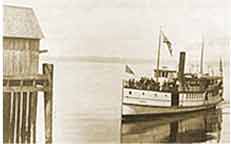|
- Regard all photographic material as irreplaceable.
- Use only pencil when working with photographic materials, or in the collections area. Never write on photographic materials, unless properly trained in numbering artifacts.
- Wash hands before handling photographic materials. Avoid use of lotions and creams.
- Use gloves when handling all materials, including paper slide mounts. Remove jewelry and watches that might catch on photographic material.
- Before handling photographic material, examine it closely. Note areas of weakness that may be damaged during handling. Place a support under large, unmounted photographic prints before lifting.
- Use both hands when moving framed and unframed photographic material. This may not be required for small articles, such as slides, small prints, tintypes, and cased images, but holds true for 8 x 10-inch prints and larger. Always support the underside of framed photographs and large prints and negatives, especially glass-plate negatives; handle smaller materials only by their edges.
- Whenever possible, view photographic materials through their protective storage enclosures. Only remove material if absolutely necessary.
- Avoid haste when moving photographic materials. Use coordinated actions in moving and handling to insure safety. Make sure the pathway is clear of all obstacles before moving photographic material.
- Keep work areas clean. Never consume food or liquid in the vicinity of photographic materials. Never smoke in buildings where photographic materials are stored.
- Do not remove photographs from albums. Once the context for an image is lost, it loses much of its historical value.
- Incorrect cleaning methods can irreparably damage artifacts. Only a conservator should undertake cleaning or treatment procedures. Never remove encased images (daguerreotypes, ambrotypes, and tintypes) from cases.
|















